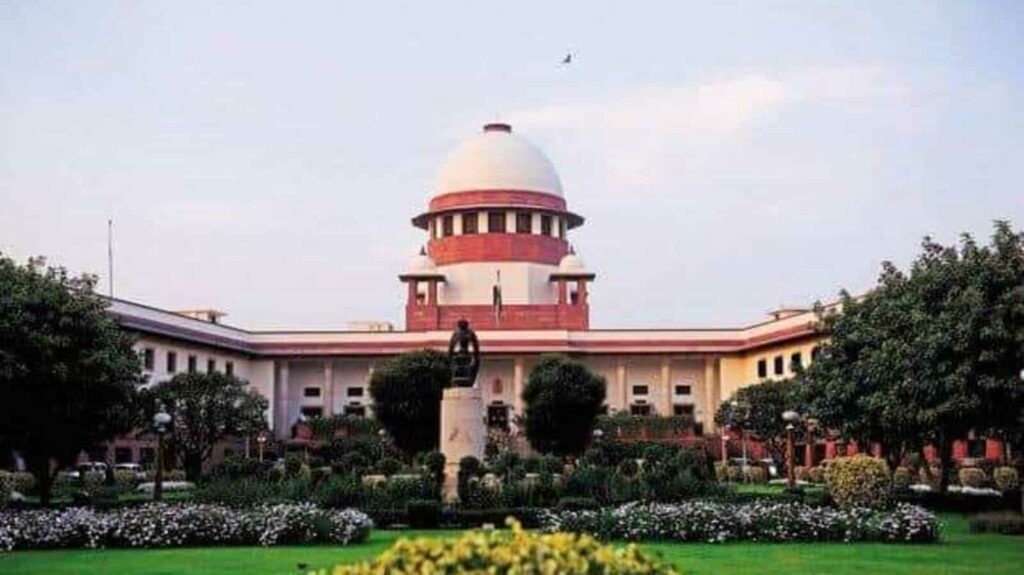Manas Dasgupta
NEW DELHI, Sept 27: The Uddhav Thackeray faction of the Shiv Sena suffered a huge set back in the Supreme Court on Tuesday as it refused to stop the Election Commission of India from proceedings to decide whether his or the faction led by the incumbent Maharashtra chief minister Eknath Shinde was the “real” Shiv Sena.
The “Sena Vs Sena” case was one of three proceedings of the constitution benches which were beamed live through YouTube channels for the first time in the history of the Supreme Court on Tuesday. The three separate Benches were led by Chief Justice U.U. Lalit, Justices D.Y. Chandrachud and Sanjay Kishan Kaul, respectively.
The cases being heard include the challenge to the 10% quota for economically weaker sections of the society before the Chief Justice’s Constitution Bench. The five-judge Bench headed by Justice D.Y. Chandrachud, who began with an announcement in court that “we are virtual”, is hearing the Sena Vs Sena case, while Justice Kaul’s Constitution Bench began by hearing the challenge to the All India Bar Examination — a post-enrolment exam for lawyers.
A full court meeting of apex court judges on September 20 had resolved to live-stream Constitution Bench hearings from September 27.
The constitution bench headed by the chief justice on Tuesday reserved its verdict on a batch of pleas challenging the validity of the 103rd Constitution amendment providing 10 per cent reservation to economically weaker sections (EWS) persons in admissions and government jobs.
Contrary to the confidence earlier expressed by Uddhav Thackeray that his faction would win the case, the apex court summarily rejected his factions’ request that the court continue to stop the Election Commission from deciding on the claim of Eknath Shinde-led group over the “real” Shiv Sena and its symbol.
Politically under the present anti-defection law the Shinde faction enjoyed an advantage because much larger than two-third members of the Sena Legislature Party had supported the rebel leader Shinde and could not be disqualified from the membership of the state Assembly. This might compel the ECI to give the Shinde faction the recognition of “real” Sena and also allot it the party’s recognised election symbol, “bow and arrow,” as demanded by the Shinde faction.
Uddhav Thackeray’s government in Maharashtra crashed in June after a coup led by his former aide Eknath Shinde, who went on to form a new government along with the BJP. Shinde was sworn in as Chief Minister on June 30, with the BJP’s Devendra Fadnavis as his deputy.
On August 23, the Supreme Court had referred to a five-judge bench petitions filed by the Uddhav Thackeray and Shinde-led factions raising several constitutional questions related to defection, merger and disqualification.
The court said the petitions raise important constitutional issues relating to the 10th schedule of the Constitution on the disqualification of defecting MLAs, the power of the Speaker and the Governor and judicial review. The 10th Schedule of the Constitution provides for the prevention of defection of the elected and nominated members from their political party and contains stringent provisions against defections.
The Thackeray faction had told the court that MLAs loyal to Eknath Shinde could avoid disqualification under the 10th Schedule of the Constitution only by merging with another political party, while the Team Shinde had argued that the anti-defection law cannot be a weapon for a leader who has lost the confidence of his own party. As many as 40 of the 56 Sena MLAs had joined the Shinde camp to form the government with the BJP.
Live-streaming has become a reality nearly four years after the court’s Swapnil Tripathi judgment of September 2018 in which it had upheld the plea for live-streaming of its proceedings. In that judgment, the court had said live-streaming would “virtually” expand the court beyond the four walls of the courtroom.
“Live-streaming of court proceedings has the potential of throwing up an option to the public to witness live court proceedings which they otherwise could not have due to logistical issues and infrastructural restrictions,” the court had said.
The trigger came with a recent letter from senior advocate Indira Jaising to live-stream important case hearings, especially those being heard by Constitution Benches. Justice Chandrachud, who was on the Bench, had observed that live-streaming of proceedings would be the true realisation of the “open court system” in which courts were accessible to all. The court had laid down several conditions in the 2018 judgment, mostly in consonance with those handed over by Attorney General K.K. Venugopal.
On Monday, a bench headed by Chief Justice of India Uday Umesh Lalit said the top court will soon have its own “platform” to live-stream its proceedings instead of having to use the YouTube. In a unanimous decision taken at a recent full court meeting headed by the CJI, the top court decided to live-stream proceedings of all constitution bench hearings from September 27, four years after the path-breaking announcement by Justice Misra.
The Supreme Court may live-stream proceedings through YouTube and later host them on its server, sources had said. People will be able to access the proceedings on their cell phones, laptops, and computers without any hassle.
On September 27, 2018, the then Chief Justice of India Dipak Misra had delivered the landmark judgement on the live telecast or webcast of important proceedings in matters of constitutional importance, saying “sunlight is the best disinfectant”.
On August 26, for the first time since its inception, the Supreme Court live-streamed proceedings of a bench headed by then Chief Justice (since retired) NV Ramana through a webcast portal. It was a ceremonial proceeding as Justice Ramana was to demit office that day.

